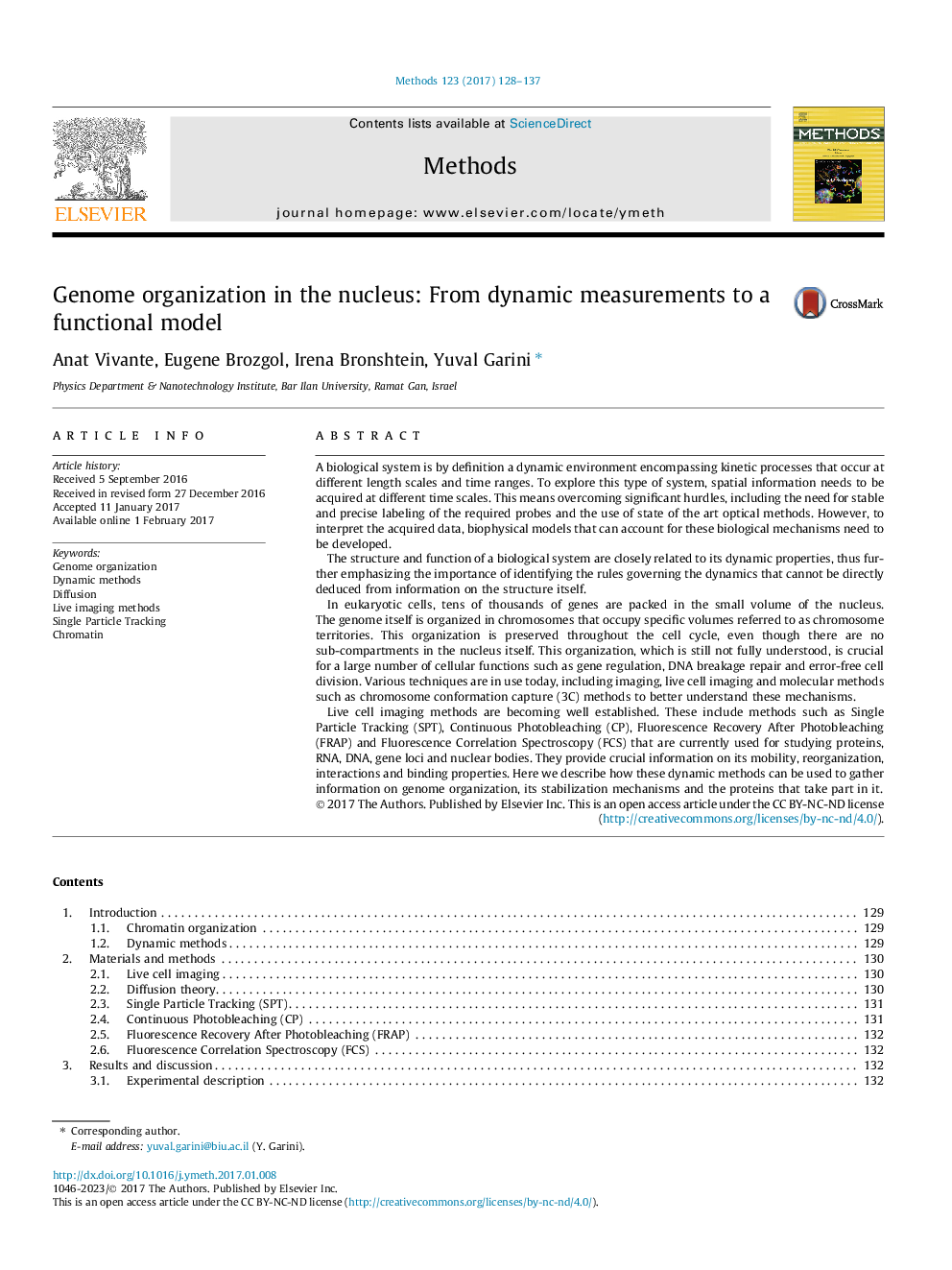| کد مقاله | کد نشریه | سال انتشار | مقاله انگلیسی | نسخه تمام متن |
|---|---|---|---|---|
| 5513438 | 1541205 | 2017 | 10 صفحه PDF | دانلود رایگان |
- Live cells imaging methods characterize the dynamic properties of the genome.
- These methods yield crucial information on chromatin mobility, structure & function.
- SPT, CP, FRAP and FCS, provides a unified picture of the studied mechanisms.
- Formulating a biophysical model of chromatin organization and its regulating network.
A biological system is by definition a dynamic environment encompassing kinetic processes that occur at different length scales and time ranges. To explore this type of system, spatial information needs to be acquired at different time scales. This means overcoming significant hurdles, including the need for stable and precise labeling of the required probes and the use of state of the art optical methods. However, to interpret the acquired data, biophysical models that can account for these biological mechanisms need to be developed.The structure and function of a biological system are closely related to its dynamic properties, thus further emphasizing the importance of identifying the rules governing the dynamics that cannot be directly deduced from information on the structure itself.In eukaryotic cells, tens of thousands of genes are packed in the small volume of the nucleus. The genome itself is organized in chromosomes that occupy specific volumes referred to as chromosome territories. This organization is preserved throughout the cell cycle, even though there are no sub-compartments in the nucleus itself. This organization, which is still not fully understood, is crucial for a large number of cellular functions such as gene regulation, DNA breakage repair and error-free cell division. Various techniques are in use today, including imaging, live cell imaging and molecular methods such as chromosome conformation capture (3C) methods to better understand these mechanisms.Live cell imaging methods are becoming well established. These include methods such as Single Particle Tracking (SPT), Continuous Photobleaching (CP), Fluorescence Recovery After Photobleaching (FRAP) and Fluorescence Correlation Spectroscopy (FCS) that are currently used for studying proteins, RNA, DNA, gene loci and nuclear bodies. They provide crucial information on its mobility, reorganization, interactions and binding properties. Here we describe how these dynamic methods can be used to gather information on genome organization, its stabilization mechanisms and the proteins that take part in it.
Journal: Methods - Volume 123, 1 July 2017, Pages 128-137
